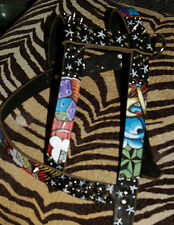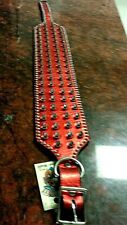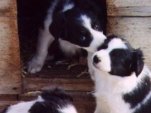Hybird Vigor Explained

In order to be a hybrid, an animal must be the product of two different species: donkey and a horse, offspring is a mule; lion (m) and a tiger (f), offspring is a liger; tiger (m) and lion (f), offspring is a tigon; wolf and domestic dog, offspring is called a wolf hybrid. Remember high school Biology, animal classification: Kingdom, Phylum, Class, Order, Family, Genus, and Species?
Each animal in the crosses mentioned share the same Family (Equus, Felis, Canis) but are different species. The offspring are hybrids. Domestic dogs are the same species familiaris. When you cross breed domestic dogs (Canis familiaris ), you are within the same species; therefore, not creating a hybrid.
Hybrids are not problem free. In Ligers, no fertile male has ever been found and necropsies have proven sterility in them. Other issues in ligers and tigons: ligers may be prone to gigantism and tigons may be prone to dwarfism. Both hybridizations have shown an increase in cancer rates and decrease in lifespan. (Tiger Territory, M. Annabell, 2001). In wolf/dog hybrids, there are often behavioral issues. The domestic dog differs greatly in behavior from a wolf. Dogs were bred to be cooperative with humans while wolves fear humans and try to avoid us.
Even domestic Wolves are far different from dog in terms of behavior. Dogs often accept leadership happily while adult wolves will fight for leadership within the pack. The wolf/dog hybrid can be a time bomb temperamentally when they hit full maturity. Wolves also differ from dogs in other ways including: skull structure, nutritional needs, estrus cycles, etc. (Canine Hybrid Issues Surrounding the Wolf Dog , M. Sloan, J. Moore Porter, 2001)
Returning to the domestic dog: Canis familiaris. A breed is not a separate species, it is just a set of genes specifically bred to exhibit certain traits like the coat an Old English Sheepdog has or the build of a Rottweiler. With C. Familiaris, we just took traits in dogs of the same species and developed them to various breeds.
An example that may clarify this: all humans are Homo sapiens regardless of color, eye shape, etc. Nature helped develop certain traits to best suit the environment the H. sapiens were developing in. All domestic dogs are C. Familiaris; we just developed them into different breeds. Species is the same but there are differences based on need.
What determines a breed in the loosest sense is that when bred to another of the same breed, you will end up with the same traits. When you breed a German Shepherd Dog to another German Shepherd Dog, you only get German Shepherd Dogs.
You will not get something that looks like a Labrador Retriever. If you cross a German Shepherd Dog and a Labrador Retriever, you can get offspring that look more GSD, more Lab or resemble both parents in varying ways. With purebreds you have a predictable outcome. With crosses, you do not.
It takes many generations to fix the traits in a new breed – not just four or five. For example, the Shetland Sheepdog, a breed from the Shetland Isles is NOT a miniaturized Collie. But the Shetland Sheepdog is a breed that is only about 100 years old – relatively new. Collie was crossed into the early Shetland Sheepdog to add to certain traits, but this also added the problem of oversized Shetland Sheepdogs – something breeders have struggled with for many decades to correct due to the infusion of Collie blood into a developing breed.
Crossbred dogs such as the Cock-a-poo are NOT hybrids nor are they breeds. The Cock-a-poo Club of America states in its guidelines that in order to be a cock-a-poo, that you breed Cocker (American or English) to a Toy or Miniature Poodle. This is not a breed; it is a cross – a mutt. Cock-a-poos may look very Poodle, very Cocker or somewhere in between.
Even a Cock-a-poo bred to a Cock-a-poo is not a breed. Remember, it can take decades or more to get true-breeding traits – or to repair damage done when something else is crossed in during the early history of a breed just beginning to come together.
There is research that states the domestication of what we know today as a dog may have started longer ago that assumed – maybe as much as 100,000 years ago based on mitochondrial DNA studies of wolves and dogs. (The Truth About Dogs, S. Budiansky, 1999) No one really knows for certain when wild canines began domesticating themselves or we began domesticating them.
Therefore, the creation of specific breeds is relatively new in the grand scheme of the history of the domestic dog. Bones of truly domesticated dogs were found dating back to as early as 5,000 BC. Ancient pictures show dogs that were of definite sight hound type. (Dogs of Ancient Egypt, J. Dunn).
Back to Hybrid Vigor: is it true? No. Returning to the cock-a-poo example. Poodles and Cocker Spaniels have many of the same health problems; therefore, a cross of them might actually stand a higher risk of inheriting a problem than a purebred pup from a good breeder.
Some of the problems in both breeds are: hip dysplasia, progressive retinal atrophy, epilepsy, poor temperaments, allergies, skin and ear problem, Legg-Calve-Perthe’s, luxating patellas, hypothyroidism, cryptorchidism, gastric torsion ( Cock-a-poos, Cindy Tittle Moore, 1997). Yes, things like ear infections, allergies, temperaments and gastric torsion have hereditary as well as environmental influences.
Now, why did I state a cross might stand a higher risk of a hereditary problem than a dog from a good breeder? Rarely do people breeding crosses do any health tests – genetic or otherwise. They assume that an annual veterinarian visit and shots are all that is needed. Maybe for a pet dog, but breeders need to consider the genetic health of puppies produced.
Things such as Hip and Elbow Dysplasia, Luxating Patellas, various eye problems, von Willebrand’s (a bleeding disorder) and Thyroid function are common in many, many breeds and crosses.
The myth that purebreds are unhealthy or nasty came about due to bad breeders who either did not care about health testing or who were ignorant and felt that dogs who show no outward signs of a problem do not have it. A purebred dog from a good and educated source has a greater chance of being healthier than a crossbred.
So, the next time you hear about hybrid vigor and how mutts are healthier, remember this: hybrid vigor as related to dogs is a myth.













